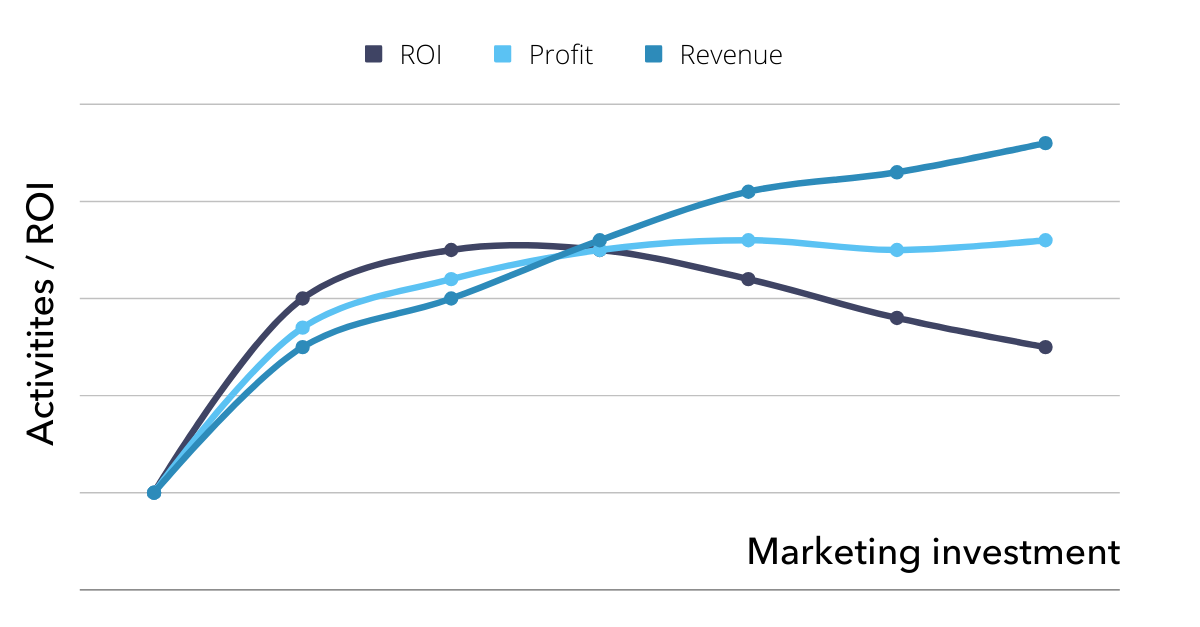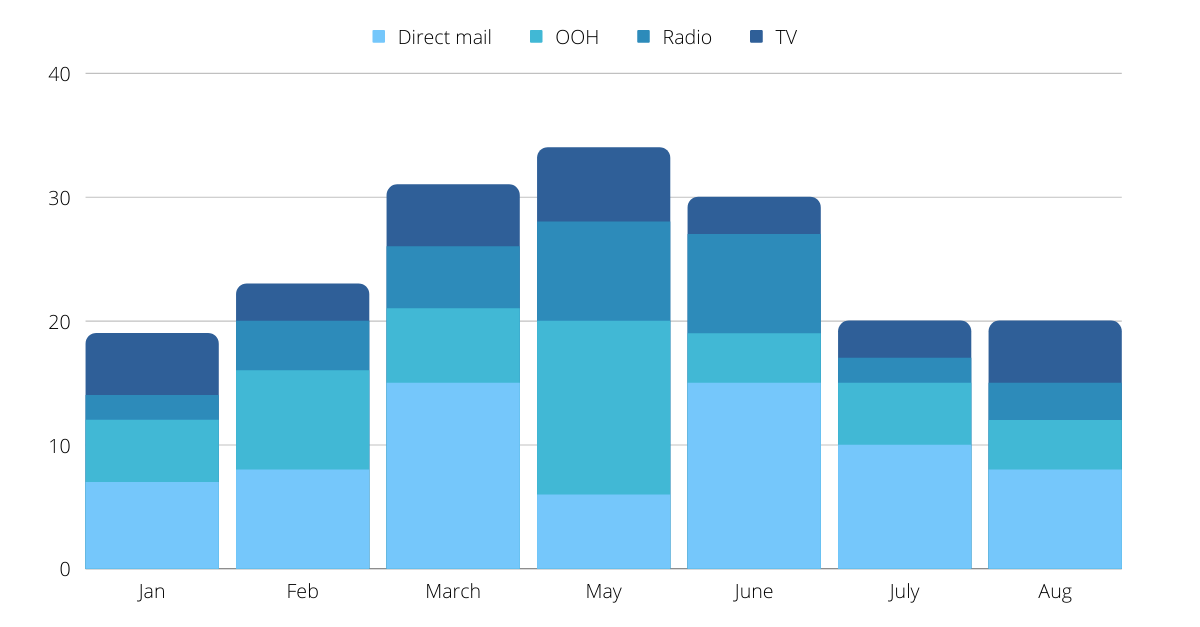Blog
You can’t afford to overlook this marketing data point
February 14, 2022 | Paul Arpikari, Aija Peltola

If we’d look marketing industry from a helicopter perspective, historically, data hasn’t been in a center of attention.
When comparing the marketing industry to other industries such as logistics, software development, retail, or even financial institutions that make decisions based on data, it seems like marketing has been almost standing since the 1950s-1960s.
And this is not a gut-feeling either, research companies like Gartner have also discovered that about half ( 50%! ) of the marketing decisions that are made, are missing data to back it up.
Why being data-driven isn’t enough
Even though the field of marketing measurement has been on the rise for years, almost to the point where whatever we think of we want to measure, we can, the most strategic questions can easily remain unanswered.
As an example, the eternal question: How to allocate the marketing budget between different channels and campaigns for it to be the most profitable?
To this day, marketers often struggle to answer this question. Reason for this is that all the metrics we collect to our dashboards view the world through their own lens, measuring things from different angles. This makes the results hard to compare and therefore, hard to draw conclusions from.
Cartoon by marketoonist
The marketing data points we are used to measure
As said, the challenge most companies face is not the lack of data. The real struggle lies in choosing what to measure and most importantly, how that can be used to guide future actions.
Commonly used data points, which I’m sure you are very aware of, can be separated into three categories:
1) Business metrics
Such as campaign sales, marketing-driven pipeline value, customer retention rate, and customer lifetime value
2) Conversion metrics
Such as conversion rate, cost per conversion, customer acquisition costs, also ROI relates to these, don’t get too caught up with labels
3) Marketing metrics
Such as SQLs, MQLs, impressions, engagement, CTR, Website visits, organic traffic, and keyword ranking
There are plenty of potential decisions to be made based on for example these data points, but there is only one information to be missed that could make you lose millions in sales.
What we measure the least, even when we couldn't afford to
The answer is ROMI. What is the actual return on the investment we’ve made, divided in all the individual campaigns and channels, over a long period of time, or even better, on a continuous basis?
The beauty of measuring ROMI is that you can find out how much sales a specific campaign brought in, with its relation to the costs of the campaign. If we cannot get to this information, we cannot confidently say that the campaign we ran was a success.
Discovering the best performing campaigns and channels allows you to allocate the money away from costly but ineffective campaigns to the most optimal ones. And in addition to that, make the already winning campaign even better.

Based on a quick poll we did in 2021, the result is underlining this statement.
It seems that while the interest of finding media channels that generate the most sales is high, measuring ROMI itself isn’t. Even though, it would be the one metric that would lead to the biggest and most effective sales drivers.
This leads us nicely to the one thing you don’t want to leave out from your calculations when discovering the best channels and campaigns to drive sales.
You need to measure the optimal marketing investment level
Not only do we need to know where the money is well spent, we need to know how much of it is the most optimal amount. Even though it might seem that a winning campaign was a 100% success, you might still have a situation where the campaign could’ve been even better.
Failing to measure the optimal marketing investment level causes the biggest losses to companies. Of course, you want the annual sum of money you are putting to media / marketing communications to convert new customers, get sales and ultimately profit, be spent as wise as possible.

As one could imagine, the ideal case is when a maximum ROI can be reached with the minimum investment level, continuously, in varies medias and with different campaigns.
Failing to find optimal marketing investment level usually can be separated to two outcomes:
1) Underinvesting in marketing
Based on our experience you are most likely actually underinvesting in your campaigns. Typically, there can be room for even +15-20 % extra investments with still being margin and profit positive with campaigns.
2) Overspending in media
This is simply explained. You are losing money on spending too much on media without getting more results. End of the story.
How to measure optimal marketing investment level
Step 1: Collect the data
You need to start gathering all the necessary information systemically. The most important data you need to find for this, is sales and marketing data. And to be even more specific, you want these to be in one location.
Step 2: Use time series analyses and isolate the effect of media, promotions, and external factors in your calculations
When you are starting to combine and collect all the data from your previous campaigns, you are most likely starting to see some patterns and similarities. Most effectively this is done by using time series analysis.

Time series analysis compares similar time periods and allows you to review how different media mixes and promotion items perform in certain contexts in terms of sales, margin, and ROI.
Start by looking when sales spikes take place, and what media channels become active at that time. If you can and want, you can dive deeper and look at what promotions have been advertised in each media channel to figure out promotions' own uplift, but if you're here to find the optimal investment level we suggest leaving the promotion effectiveness analysis and attributing the uplifts between the media channels.
The objective here is to find out how much sales and margin each media drives when it's active. Comparing this number to the investment itself reveals the ROMI, so how effective each media has been.
Reverse-engineering your marketing machine back to the beginning, we start to notice:
1. Your best campaigns
2. ROMI for the investments in that campaign
ROMI becomes especially important in optimizing your investment level as your "best" campaigns might perform as well as possible (relatively low media channel ROMI), in which case you don't want to pour more money into them. If other campaigns have relatively low ROMI as well, you might want to stay where you are. Things are going nicely, and there's not much room for improvement in terms of investments.
But if you discover campaigns that have high media channel ROMI and relatively low investments, it might be worthwhile to step on the gas and test how the ROMI develops with higher investments, which brings us to step number 3.
Step 3: Be curious
Since it’s rather clear that marketing industry is built from individuals that are great at telling stories, building visuals, simplifying complex stuff, and who are also eager to learn, measuring and optimizing ROMI should not make an exception.
So, as the results come in, do some extra research, and think critically the reasoning behind those results. Why one campaign was better than the other, and how that can be replicated in the future.
Beware though, depending on the tools you use in your analyses, there’s a lot of good learnings, but also of course some painful mistakes you’d rather not look back to. But without discovering these, there’s no way forward.
Step 4: Plan your future campaigns with new insights
Imagine this situation: You already know, that by putting X € of your marketing budget in TV, the sales and margin you will most likely be generating is Y. If you, instead, invest 15% more, you’d make Z €. Replicate this to the rest of the channels and campaigns and you’re off to the most optimal marketing investment levels throughout your entire marketing budget. Sounds too easy?
Conclusion: Don’t leave money on the table
If you want to rebuild trustworthy relationship with top management that in most cases haven’t gotten any better between studies in 2010s and 2020s , you need to start paying attention to not only measuring optimal marketing investment levels, but also maintaining a habit of searching for new ways and solutions to help you reach it more often.
Coming back to the earlier statement, the lack of data is usually not, and it shouldn’t be the reason you cannot measure your marketing effectively. Also, the data itself doesn’t solve your problems. You need to know what to do with the data and let that guide your planning.
In other words, you need to start measuring your marketing in a way that is understandable.
Curious to learn more? Book a demo.
Related articles
Read more postsNo items found!